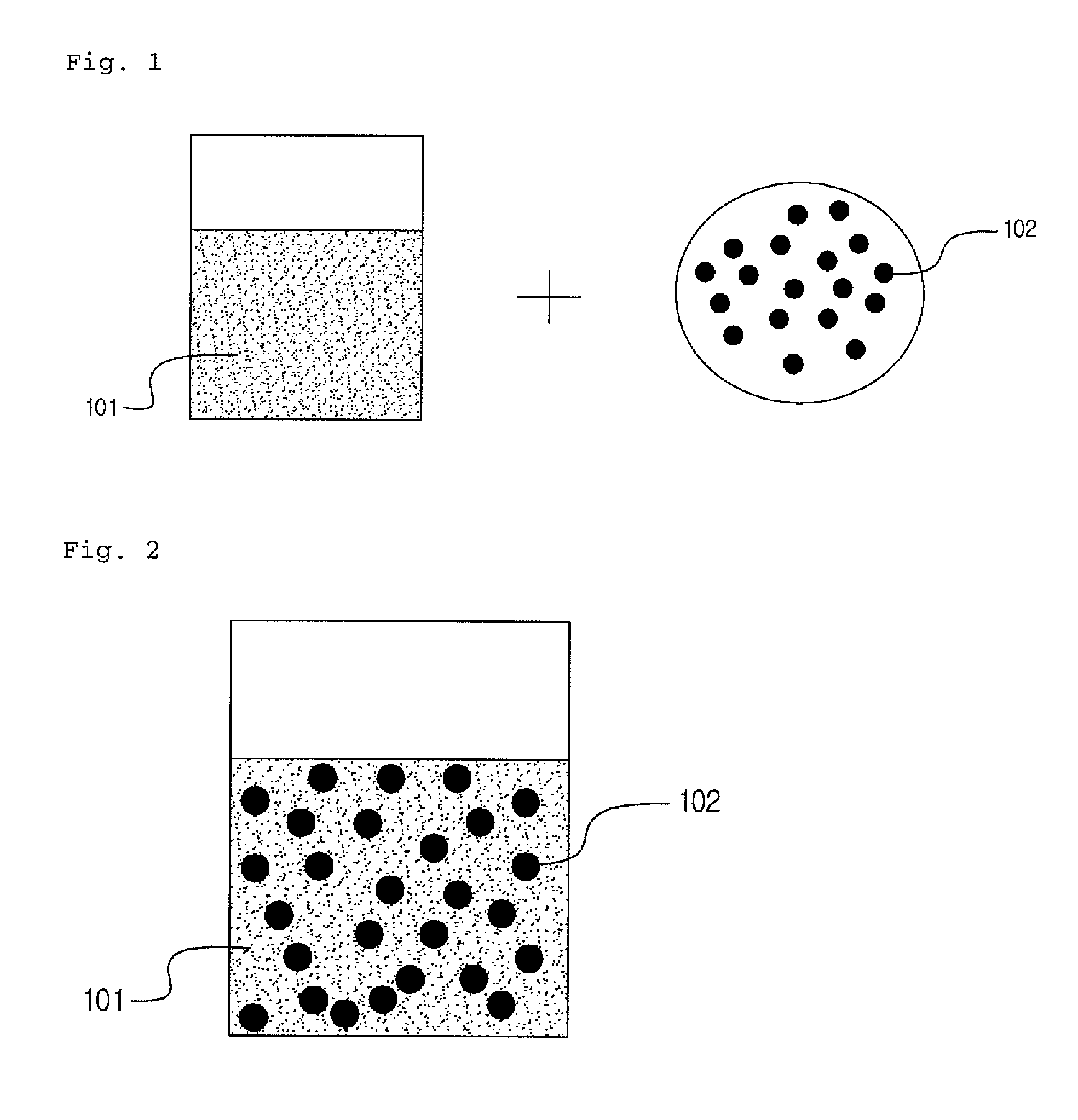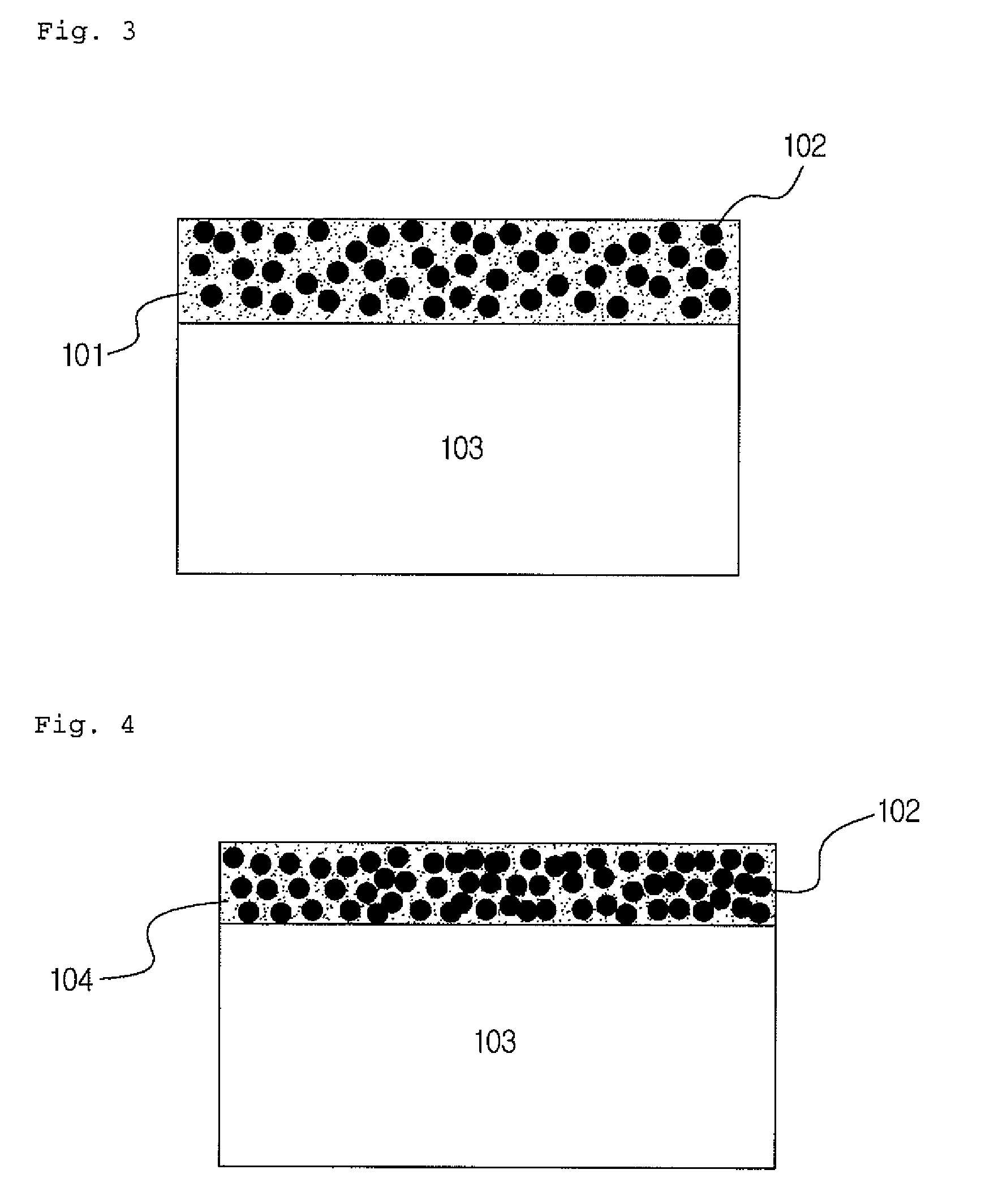Solar cell manufactured using amorphous and nanocrystalline silicon composite thin film, and process for manufacturing the same
a technology of amorphous and nanocrystalline silicon and composite thin films, which is applied in the field of solar cells, can solve the problems of reducing production yield, reducing current generation, and reducing the conversion efficiency of solar cells, so as to achieve excellent conversion efficiency to a solar cell, improve photoelectric conversion efficiency, and reduce production cost
- Summary
- Abstract
- Description
- Claims
- Application Information
AI Technical Summary
Benefits of technology
Problems solved by technology
Method used
Image
Examples
Embodiment Construction
[0062]Hereafter, the present invention will be described in detail in the following example with reference to the accompanying drawings.
[0063]General constructions and functions commonly known in related arts are not essential components for the present invention and have not been described in detail herein, in order to avoid unnecessary duplication of explanation thereof.
[0064]FIGS. 1 and 2 illustrate a process of preparing a mixture of the silicon precursor and the crystalline silicon nanoparticles according to one embodiment of the present invention.
[0065]The silicon precursor may be a liquid silane SiH4 composition 101.
[0066]The liquid silane composition can optionally include an organic solvent.
[0067]The silane composition 101 may include a colloidal silicon dispersed in an appropriate dispersing solvent. Such colloidal silicon is used for increasing silicon concentration of the silane composition 101 and can regulate thickness of a coating film by silicon content of in the com...
PUM
| Property | Measurement | Unit |
|---|---|---|
| size | aaaaa | aaaaa |
| particle size | aaaaa | aaaaa |
| temperature | aaaaa | aaaaa |
Abstract
Description
Claims
Application Information
 Login to View More
Login to View More - R&D
- Intellectual Property
- Life Sciences
- Materials
- Tech Scout
- Unparalleled Data Quality
- Higher Quality Content
- 60% Fewer Hallucinations
Browse by: Latest US Patents, China's latest patents, Technical Efficacy Thesaurus, Application Domain, Technology Topic, Popular Technical Reports.
© 2025 PatSnap. All rights reserved.Legal|Privacy policy|Modern Slavery Act Transparency Statement|Sitemap|About US| Contact US: help@patsnap.com



